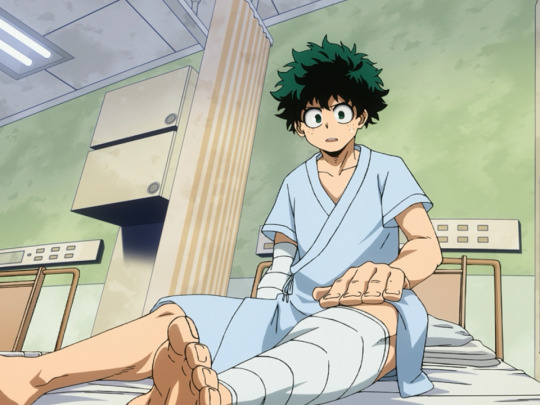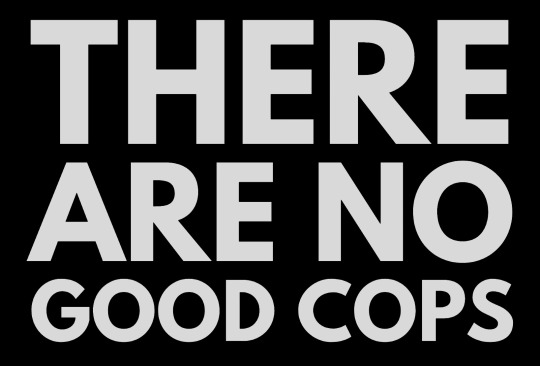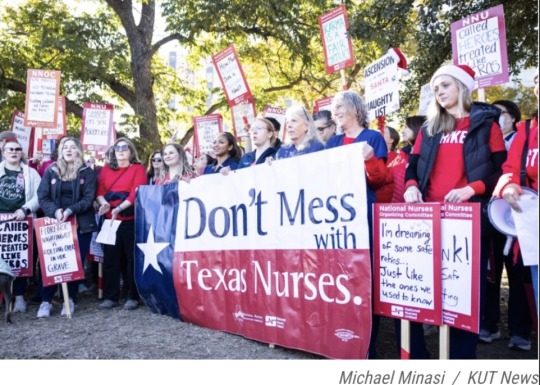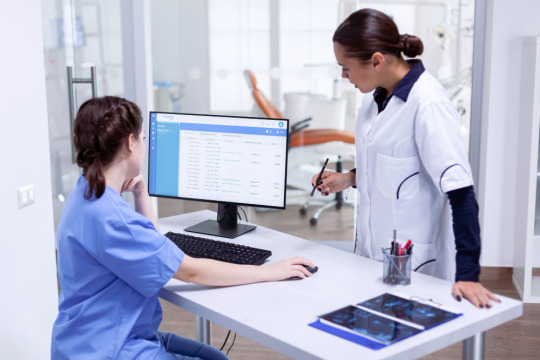#Healthcare Safety
Text

Learn about the crucial role of healthcare safety software in enhancing patient care and operational efficiency at Ambulatory Surgery Centers (ASCs). Explore Performance Health's blog to discover the latest advancements in healthcare safety software solutions catering specifically to ASCs. From incident reporting to compliance management, stay informed about the benefits and best practices of utilizing healthcare safety software in ASC settings.
0 notes
Text
The Crucial Role of Enterprise Risk Management in Modern Healthcare

Imagine you're a tightrope walker, thousands of feet above the ground. Without a safety net, any misstep can lead to disaster. Now, think of the healthcare sector as this tightrope walker. With the myriad of complexities, regulations, and unpredictable factors that can pop up every day, having a robust safety net is paramount. Entering the safety net we all need: enterprise risk management software in healthcare. This is not just any safety net; it's a dynamic, adaptable, and resilient one that assures everyone on the rope can perform their best without the constant fear of falling.
Ready to know more? Let's unravel the magic thread by thread, shall we?
What is Enterprise Risk Management in Healthcare Anyway?
You might be wondering, what's the big deal about enterprise risk management in healthcare? Let's break it down. At its core, it's about identifying potential risks, assessing them, and putting in place strategies to manage those risks. Think of it as a proactive approach rather than a reactive one.
In the healthcare sector, there are countless unpredictable factors. From patient care challenges to technology hiccups to regulatory changes. Having a system that spots potential threats before they escalate? That’s the golden ticket.
And guess what? This golden ticket isn't reserved for a select few. Every stakeholder, from medical professionals to administrative staff, plays a part in making enterprise risk management in healthcare a success.
By embracing this approach, healthcare providers ensure smoother operations, better patient outcomes, and yes, a sigh of relief knowing they're backed up by a robust system.
The Game-Changing Benefits of Enterprise Risk Management in Healthcare
Sure, enterprise risk management in healthcare sounds neat, but what's in it for the healthcare sector? Well, a lot. For starters, it helps in early risk detection. By spotting issues before they blow up, institutions can save resources, reputation, and most importantly, lives.
Secondly, it promotes a culture of safety. When everyone is tuned into the risk management frequency, it fosters an environment where safety is the norm, not the exception. It's like having a team where everyone is a goalkeeper, always on the lookout, and ready to defend.
Lastly, it enhances decision-making. Armed with the right information and tools, healthcare providers can make informed decisions. It's like having a roadmap in a maze, guiding you at every twist and turn.
Real-Life Instances: Enterprise Risk Management in Action
Picture this: A hospital is planning to implement a new electronic health record (EHR) system. It’s shiny and promising, and everyone’s excited. But with this system come potential risks: data breaches, system downtime, and training challenges, to name a few.
By employing enterprise risk management, the hospital can anticipate these risks. They can put measures in place to mitigate them. So instead of panicking when there's a system glitch, they have a backup plan, trained staff, and solutions ready to deploy.
Another scenario? A sudden outbreak of a contagious disease. With a solid risk management plan, hospitals can predict resource needs, mobilize teams faster, and ensure the safety of both patients and staff.
Best Practices to Maximize Enterprise Risk Management in Healthcare
So, you're sold on enterprise risk management in healthcare. That’s great, but… how do you make the most of it?
Begin by fostering a culture of open communication. Encourage staff at all levels to voice concerns and observations. Remember, it’s a team game.
Secondly, invest in training. Equip your team with the skills and knowledge they need to be effective risk managers. It’s like giving them a magnifying glass to spot even the tiniest of threats.
Lastly, keep revisiting and refining your strategies. The healthcare landscape is ever-evolving, and so should your risk management approach. It's about being agile, adaptable, and always on your toes.
Challenges to Implementing Enterprise Risk Management
While the benefits of enterprise risk management in healthcare are plenty, it’s not without its challenges. First up, is resistance to change. It’s human nature. Introducing a new system or approach can often meet with skepticism. The key? Consistent communication and highlighting the bigger picture.
Then there’s the challenge of resources. Implementing a robust risk management system requires investment: both time and money. Here, long-term vision becomes crucial. It’s not about the immediate costs, but the long-term savings and benefits.
Lastly, the vastness of the healthcare sector can be daunting. With so many departments and functions, integrating them under one risk management umbrella can seem overwhelming. But remember, step by step, brick by brick, it’s doable.
The Future of Enterprise Risk Management in Healthcare
The horizon of healthcare is vast and ever-evolving, and as we stand at its edge, enterprise risk management in healthcare looms large, promising a safer and more efficient future.
Firstly, with the integration of artificial intelligence and machine learning, risk management is on the cusp of a revolution. Predictive models can analyze vast data sets, recognize patterns, and forecast potential risks way before they materialize.
Furthermore, with the global community becoming more interconnected, the sharing of risk management strategies across borders will become commonplace. Hospitals in New York might soon be implementing strategies tested and refined in Tokyo or Mumbai. This cross-pollination of ideas ensures that best practices are not confined within borders but are shared, refined, and implemented globally.
Additionally, as patient care becomes more personalized with treatments like gene therapy and personalized medicine, risk management will need to adapt. Enterprise risk management in healthcare will play a pivotal role in ensuring that these bespoke treatments are delivered safely, taking into account the unique risks they may present.
But it's not just about technology and global collaboration. The future will also see a stronger emphasis on the human aspect. Emotional intelligence, understanding patient behaviors, and predicting human errors will become crucial components of risk management. After all, machines can crunch numbers, but understanding the human heart and mind? That’s where the real challenge and opportunity lie. For more details contact us at https://www.safequal.net/contact-us/.
Lastly, sustainability and eco-friendly practices are making waves in every sector, and healthcare is no exception. The future of enterprise risk management will also encompass strategies to reduce carbon footprints, manage bio-waste efficiently, and ensure a sustainable healthcare environment.
Conclusion
Navigating the intricate world of healthcare can often feel like walking on a tightrope. But with enterprise risk management in healthcare, the sector gets more than just a safety net. It gets a strategy, a plan, and a vision for a future where risks are not just managed but anticipated and mitigated. Embracing it isn’t just a smart move; it's the need of the hour.
Read More:
#enterprise risk management in healthcare#Enterprise Risk Management#Healthcare Safety#Patient Protection#Data Safeguard#Modern Healthcare#Effective Operations#Risk Mitigation#Healthcare ERM
0 notes
Text

American Politics is a Dumpster Fire.
#american politics#america stinks#abortion#pro choice#pro chocie#abortion ban#abortion rights#reproductive rights#bodily autonomy#abortion is healthcare#trans rights#trans rights matter#trans rights now#trans rights are human rights#transgender rights#kosa#kids online safety act#fanfiction#archive of our own#ableism
2K notes
·
View notes
Text
This story is part of CBC Health's Second Opinion, a weekly analysis of health and medical science news emailed to subscribers on Saturday mornings. If you haven't subscribed yet, you can do that by clicking here.
As measles cases keep appearing in more parts of the country, new projections suggest there's a high chance Canada may experience a "sizable outbreak" — with anywhere from dozens to thousands of people infected if the disease strikes communities with low vaccination rates.
As of Friday, at least 31 cases of measles have been reported so far this year across Canada, according to a CBC News tally of provincial and regional figures released by public health teams.
That's already the largest annual total since 2019 and more than double the number of cases reported last year, as medical experts fear the number will rise while more Canadians travel in and out of the country this month for March break. [...]
Continue Reading.
Tagging: @politicsofcanada, @vague-humanoid
258 notes
·
View notes
Text
We should thank socialism for bringing us so many niche finnish indie games
No finnish gamedev has to live in fear of homelessness while juggling 3 jobs, and that is the real reason these games are so good on top of existing. Theyre not like that just because finnish people are "weird and sadistic"
#cruelty squad#ultrakill#fear and hunger#gamedev#baba is you#noita#scp containment breach#barotrauma#lake view cabin#socialism#safety net#public healthcare#universal basic income#social democracy#finland
61 notes
·
View notes
Text
#hospital#hospitals#infection control#infections#tw infection#occupational health and safety#healthcare#health and wellness#mental health#health & fitness#healthylifestyle#health#ausgov#politas#auspol#tasgov#taspol#australia#fuck neoliberals#neoliberal capitalism#anthony albanese#albanese government#long covid#covid conscious#covid 19#covid isn't over#covid#coronavirus#corona virus#germs
76 notes
·
View notes
Text
My Hero Academia: Healthcare?

I don't know if any fanfic writers will find this useful or not, but I think the information is interesting and worth speculation in the My Hero setting. This also applies to any fanfic writers in the anime fandoms who want to have more immersive and in-depth writing. Obviously, writing fics that are 'accurate' is not a requirement since the point is to have fun, but here's some knowledge to use (or not use) if anyone is interested.
Obviously, Deku's been in the hospital a lot. A lot of the characters are injured and in the hospital a lot. But for all the hospital visits, nobody in the series is going to be bankrupted by astronomical healthcare costs. (Yes, that's a jab at America's system.) And it's not because the Pros, especially the popular ones, have money.
Here's why:
Quick rundown of how healthcare in Japan works: Everybody receives healthcare, everybody has health insurance. In Japan, your employer is legally required to provide you with health insurance. If you are unemployed, you will be on a community healthcare plan. There is also a plan for citizens over the age of 75. This also applies to foreigners who have established permanent residence of three months or longer.
Article 25 of Japan's Constitution is paraphrased as follows:
“all people shall have the right to maintain a certain standard of healthy and cultured life” and that “the state shall try to promote and improve the conditions of social welfare, social security, and public health” for this purpose.
I'm not going to reiterate the system in its entirety, but if you would like to learn more, this site here (the Article 25 quote I used is also found on that page) has a brief and comprehensive explanation of how healthcare is handled. However, one thing I am going to mention that is relevant for Deku and other Pros is the threshold out-of-pocket expense.
In Japan, citizens enrolled in healthcare do not spend more than ¥90,000 per month out of pocket, protecting them from financial disaster.
(To Americans, this may sound like a sweet deal, but hold your horses because Japan also funds this system through heavy taxation. Medical procedures are expensive and people will be paying for them one way or another.)
The question that needs asking now is how does this system apply to the hero society? Well, first off, since My Hero does take place in a slightly futuristic setting, we could take into consideration the system has been revised.
Assuming not much as changed, are heroes that operate their own agency technically considered business owners and are required to insure their employees and sidekicks?
Or...
Because they are all government employees, is the Safety Commission responsible for insuring all heroes and sidekicks no matter what they rank in their popularity?
Personally, I think it would be the latter since, in the coldest sense of the word, the heroes are essential to the Commission in upholding their system. So that makes them an asset. The Commission would want to protect its assets because as shady as they are, their own system could work against them. They certainly don't want heroes going on strike for lack of benefits or complaining the government doesn't take care of their people. So I assume it's the Commission who is covering insane healthcare costs on behalf of heroes.
(And since the system is probably funded by taxpayers' money, that also feeds into the prevalent societal discontent that's ongoing throughout the series.)
Now what about Deku and his classmates since they have not graduated and are not officially licensed yet? Honestly, I think it's probably UA itself that insures the students. That probably has to do with accreditation and so on, which is another matter entirely, but again, the backing is likely coming out of the Commission (and taxpayers') pockets.
And there you have it. Happy writing, happy research.
#my hero academia#deku#izuku midoriya#pro heroes#speculation#worldbuilding#boku no hero academia#bnha#mha#hpsc#the safety commission#healthcare#fanfiction#fanfic writing#research#archive of our own#ao3
57 notes
·
View notes
Text

Doctor Beverly Crusher
@SpaceDocMom
You are allowed to choose friends who prioritize health and safety over convenience. You are also allowed to withdraw from relationships that don't meet your health and safety needs. emojis: black heart, blue heart, masked x5, spoon
4:34 PM · Jun 21, 2024
x.com/SpaceDocMom/status/1804176090904113293
#star trek#doctor crusher#star trek the next generation#star trek tng#kindness#support#care#compassion#health care#healthcare#star trek memes#spoons#spoonies#mask up#health and safety
46 notes
·
View notes
Text
Health care workers are increasingly being assaulted or shot on the job, making hospitals and clinics among the most dangerous workplaces in America.
The big picture: Violence was a serious problem before COVID-19 — the field suffered more nonfatal injuries from workplace assaults than any other profession, even law enforcement, per the Associated Press — and pandemic stressors like backlash against public health measures have made matters worse.
The combustible situation not only can disrupt patient care but help fuel alarming levels of burnout among the pandemic-fatigued health care workforce.
"We saw a great big uptick in violence," said National Nurses United vice president Cokie Giles, noting that inadequate staffing also contributes to frustrations.
"It used to be people had a respect for what was done in hospitals and the people who worked in those hospitals. That's not there anymore," Giles said.
Context: About 3 in 4 nonfatal workplace violence injuries involved workers in health care and social work in 2020, the most recent year for which statistics are available.
169 notes
·
View notes
Text


#police restraint#sedation#Excited Delirium#police brutality#use of force#Ketamine#medical ethics#racial bias#human rights#law enforcement#accountability#lethal implications#community safety#systemic racism#public health#civil liberties#police accountability#medical malpractice#excessive force#civil rights#public safety#criminal justice reform#racial profiling#healthcare disparities#emergency response#use of sedatives#Black Lives Matter#health equity#social justice
19 notes
·
View notes
Text
“If I won the lottery …. I wouldn’t tell nobody but there would be signs”
thanks for the tags @angelfruittree @fxreflyes and @faggylittleleatherboy 💘


(open tag)
#fortunately i do have healthcare but this is the USA so the social safety net is more or less nonexistent#save me fried shrimp#my real answer is a pallet of iliada olive oil direct from kalamata btw
19 notes
·
View notes
Text
I’m not sure how reliably I’ll be able to keep up with it, but I’ve been wanting to start posting weekly or monthly Good News compilations, with a focus on ecology but also some health and human rights type stuff. I’ll try to keep the sources recent (like from within the last week or month, whichever it happens to be), but sometimes original dates are hard to find. Also, all credit for images and written material can be found at the source linked; I don’t claim credit for anything but curating.
Anyway, here’s some good news from the first week of March!
1. Mexican Wolf Population Grows for Eighth Consecutive Year

““In total, 99 pups carefully selected for their genetic value have been placed in 40 wild dens since 2016, and some of these fosters have produced litters of their own. While recovery is in the future, examining the last decade of data certainly provides optimism that recovery will be achieved.””
2. “Remarkable achievement:” Victoria solar farm reaches full power ahead of schedule

“The 130MW Glenrowan solar farm in Victoria has knocked out another milestone, reaching full power and completing final grid connection testing just months after achieving first generation in late November.”
3. UTEP scientists capture first known photographs of tropical bird long thought lost

“The yellow-crested helmetshrike is a rare bird species endemic to Africa that had been listed as “lost” by the American Bird Conservancy when it hadn’t been seen in nearly two decades. Until now.”
4. France Protects Abortion as a 'Guaranteed Freedom' in Constitution
“[A]t a special congress in Versailles, France’s parliament voted by an overwhelming majority to add the freedom to have an abortion to the country’s constitution. Though abortion has been legal in France since 1975, the historic move aims to establish a safeguard in the face of global attacks on abortion access and sexual and reproductive health rights.”
5. [Fish & Wildlife] Service Approves Conservation Agreement for Six Aquatic Species in the Trinity River Basin

“Besides conserving the six species in the CCAA, activities implemented in this agreement will also improve the water quality and natural flows of rivers for the benefit of rural and urban communities dependent on these water sources.”
6. Reforestation offset the effects of global warming in the southeastern United States

“In America’s southeast, except for most of Florida and Virginia, “temperatures have flatlined, or even cooled,” due to reforestation, even as most of the world has grown warmer, reports The Guardian.”
7. Places across the U.S. are testing no-strings cash as part of the social safety net
“Cash aid without conditions was considered a radical idea before the pandemic. But early results from a program in Stockton, Calif., showed promise. Then interest exploded after it became clear how much COVID stimulus checks and emergency rental payments had helped people. The U.S. Census Bureau found that an expanded child tax credit cut child poverty in half.”
8. The Road to Recovery for the Florida Golden Aster: Why We Should Care

“After a five-year review conducted in 2009 recommended reclassifying the species to threatened, the Florida golden aster was proposed for removal from the Federal List of Endangered and Threatened Plants due to recovery in June 2021, indicating the threats to the species had been reduced or eliminated.”
9. A smart molecule beats the mutation behind most pancreatic cancer
“Researchers have designed a candidate drug that could help make pancreatic cancer, which is almost always fatal, a treatable, perhaps even curable, condition.”
10. Nurses’ union at Austin’s Ascension Seton Medical Center ratifies historic first contract

“The contract, which NNOC said in a news release was “overwhelmingly” voted through by the union, includes provisions the union believes will improve patient care and retention of nurses.”
This and future editions will also be going up on my new Ko-fi, where you can support my art and get doodled phone wallpapers! EDIT: Actually, I can't find any indication that curating links like this is allowed on Ko-fi, so to play it safe I'll stick to just posting here on Tumblr. BUT, you can still support me over on Ko-fi if you want to see my Good News compilations continue!
#hopepunk#good news#wolf#wolves#mexican wolf#conservation#solar#solar power#birds#abortion#healthcare#abortion rights#reproductive rights#reproductive health#fish and wildlife#turtles#alligator snapping turtle#snapping turtle#river#reforestation#global warming#climate change#climate solutions#poverty#social safety net#flowers#endangered species#cancer#science#union
15 notes
·
View notes
Text
How HR Software is Shaping Patient and Employee Safety in the Healthcare Sector

Ever thought about how the worlds of HR and safety blend together? It might seem like a quirky mix at first. You know, kind of like that friend who dips their fries in ice cream. But when it comes to combining HR software with safety, especially in the healthcare realm, it’s far from quirky: it’s revolutionary.
Our modern workplaces are continually evolving. And in the whirlwind of changes, it's easy to overlook how central Human Resources is to the health, safety, and welfare of employees. Today, we’re going to take you on a journey to explore the significance of incorporating patient and employee safety software into HR. Let’s begin, shall we?
HR Software: The Unsung Hero of the Healthcare Sector
In the vast expanse of the healthcare industry, HR software often doesn't get the limelight it truly deserves. But think about it for a second. From overseeing hiring processes to ensuring regular training, HR systems are the unsung champions of smooth operations.
In healthcare, where life and death decisions can hang in the balance, the importance of a well-managed and competent team cannot be understated. HR software ensures the right person is in the right role. For instance, if a hospital is hiring a surgeon, the software can screen through hundreds of applications, ensuring that only the most qualified candidates make the cut.
Beyond just hiring, HR software can meticulously monitor work schedules. We’ve all heard stories of healthcare professionals being overworked. And in an environment where a small mistake can be critical, fatigue is not an option.
With smart HR software, teams can ensure balanced rosters, minimizing the risk of burnout and errors. It’s not just about administrative efficiency; it’s about creating a safe, productive environment for both the staff and patients.
Blending Safety Protocols with HR Software: A Match Made in Heaven
Marrying safety protocols with HR software is like combining chocolate with peanut butter. Individually great, but together they create something spectacular. It's more than just a convenience; it's an innovation that's reshaping healthcare operations. For more details on the best HR software please contact us at https://www.safequal.net/contact-us/.
Safety protocols, when isolated, can often get lost in the daily hustle and bustle. Staff might be aware of them, but there's no efficient system in place to ensure that these protocols are always followed. Enter HR software. By blending these safety guidelines directly into the daily workflow through HR systems, adherence becomes part and parcel of the routine.
Furthermore, with the aid of HR software, any updates or changes in safety protocols can be swiftly communicated to the entire workforce. Imagine the ability to instantly notify every staff member about a new employee safety procedure or an updated guideline. Well, that’s the power of integrating safety protocols with HR software. It’s a seamless dance of information, ensuring everyone stays in the loop and operates at their best.
The Dual Role of HR Software in Patient Care
Patient care is the heart of the healthcare industry. But how does HR software fit into this equation? Let’s unravel this.
Firstly, top-tier patient care requires top-tier professionals. HR software plays a pivotal role in ensuring that healthcare institutions have the best team on board. From background checks to verifying qualifications, the software meticulously vets every potential hire, ensuring patients are only treated by the best.
Then there’s the ongoing training. The medical field is continually evolving with new research, techniques, and tools. HR software can track the professional development of healthcare staff, ensuring they’re always up-to-date with the latest in their field.
Lastly, by tracking feedback and patient outcomes, HR software can help institutions identify areas for improvement. If there's a department receiving frequent complaints or a pattern of errors emerging, the system will highlight it. This provides a proactive approach to improvement, ensuring the highest standards of patient care are always maintained.
Boosting Employee Morale with HR Software
When we speak of morale in the workplace, especially in an intense sector like healthcare, we’re essentially talking about the collective spirit of the workforce. And this spirit is significantly influenced by how safe and valued employees feel.
Introducing HR software into the mix adds multiple layers of assurance for employees. For starters, they have a structured platform where they can voice concerns, whether they're about safety, interpersonal issues, or work conditions. Instead of feeling unheard, they have a direct channel to HR, fostering an environment where their concerns matter.
Furthermore, HR software offers transparency. Employees can track their performance, see feedback, and understand where they stand within the organization. When you remove ambiguity, you create an atmosphere of trust. And in a challenging environment like healthcare, trust can be the fuel that keeps teams going even during the toughest shifts.
Lastly, the personal development aspect can't be ignored. The best HR software solutions allow employees to see available training opportunities, workshops, or courses. By showing them a clear growth path, it not only enhances their skills but also boosts their confidence and motivation. It's like telling them, "Hey, we believe in your potential"
The Future of HR Software and Safety Integration
The future is an exciting canvas, especially when we imagine the potential evolution of HR software and safety systems within the healthcare sector. While our current systems are revolutionary in their own right, we're on the cusp of an even more integrated and intuitive age.
Artificial intelligence, for instance, could elevate HR software to new heights. Imagine predictive analytics that could foresee staff burnout based on work patterns or forecast potential patient-care issues based on historical data. Such foresight could allow healthcare institutions to mitigate problems even before they occur.
Additionally, with the rise of remote consultations and telehealth, HR software will need to adapt and ensure that these digital interactions meet safety standards. Ensuring that patient data remains confidential and secure, while still being accessible to authorized professionals, will be crucial.
Moreover, as the global healthcare landscape becomes more interconnected, HR software will play a pivotal role in facilitating cross-border collaborations, ensuring safety standards are uniform and upheld, no matter where the care is administered.
HR Software: Simplifying Compliance and Documentation
In a world that's increasingly moving towards digitization, paperwork seems almost archaic. Yet, in sectors like healthcare, documentation remains a linchpin. This is where HR software shines brightly, turning a potential administrative nightmare into a breeze.
The beauty of digital documentation is its accessibility. Imagine being able to pull up a patient's entire medical history, treatment plans, or feedback with just a few clicks. It's not just convenient; it ensures that care remains consistent and informed, even if the patient switches doctors or departments.
Then there's the compliance angle. With ever-evolving medical regulations, keeping up can be a challenge. HR software can be programmed to send reminders about impending certification renewals or flag any non-compliance issues, ensuring that the healthcare institution always remains on the right side of the law.For more details you can visit us at our website : https://www.safequal.net/.
Moreover, in situations that require audits or reviews, digital documentation offers a level of transparency and ease that traditional paperwork can't match. Everything is timestamped, tracked, and stored, leaving no room for discrepancies or oversights.
Conclusion
The synergy between HR software and safety measures, especially in the healthcare sector, is a game-changer. As we move forward, the integration of these two is set to revolutionize how institutions manage both employee welfare and patient care.
So, the next time you think of HR software, remember it's not just about payslips and performance reviews. It's about creating a safe, efficient, and nurturing environment for everyone involved.
Also Read:
SafeQual Launches AI Embedded Technology into Incident Reporting Workflow
#HR Software#Healthcare Safety#Employee Safety#Patient Safety#Compliance Solutions#Healthcare Technology
0 notes
Text
had a friend make a "haha bad teeth" joke and I went hatred about the American healthcare system mode

id in image description :3
also the text below (just in case tumblr destroys image quality)
its rlly rough for people with bad teeth to get any sort of treatment bc its horrific how very few dentists will accept medicare/medicaid/medical :/ its not just that they have 'meth/drug teeth" or that they "ate too much sugar" its that the healthcare system is designed to fuck over the poor. poverty begets more poverty, and it's so fucking hard to get jobs, even low paying ones, when you have "grew up poor, grew up abused, drug addict" teeth. real life example, when my dad finally got full custody of little my brother, there were literal holes in my baby brothers teeth. my brother was 3 years old. and he was lucky enough for them to be baby teeth, bc that meant pulling them had little long term effect, besides him needing braces later in teen years, but that's just one way that my mother fucked us over. she didnt take care of him, she never brushed his teeth, she didnt feed him, it was all so horrific to learn about years later. and i am afraid to think about what it's like for the kids who... weren't saved. who didn't get out. who couldn't grow up with healthy teeth, who grew up poor, who grew up with parents like my mom. its honestly rlly awful how people consider bad teeth to be a character flaw, or something, when in reality.... its poverty? its lack of access to healthcare?? its the medical system fucking over poor people in every way possible.
obviously i am not mad but i am just thinking a lot about it now
#abuse cw#abuse mention#abuse ment tw#child abuse tw#^safety obviously#I hate the American healthcare system!
22 notes
·
View notes
Text
hey btw. if your question re modern medicine or safety features is ever "well what did they do before this?" the answer is that people fucking died. that's always the answer.
"oh do babies REALLY need a vitamin k shot? well what did people do BEFORE this?" babies fucking died, suzanne. vitamin k deficient bleeding is common in newborns. a vitamin k shot does not harm the kid in any way and could very easily save their life. it's not that fucking deep.
"but BEFORE vaccines what did we do-" children died of polio, greg. people spent their lives in iron lungs. my grandmother had to watch her mother get polio and it almost destroyed her. there is a reason me and my brother got polio vaccines as children. children also died of measles. we forget that now, i think. because the vaccine is so good, but measles is awful, actually, can kill you, and has other terrible horrible side effects.
"back in my day we didn't have all this safety gear this generation is so SOFT-" back in your day, jeff, kids cracked their skulls open on curbs when they fell off their bikes, instead of hitting their helmets on the cement and scraping their knees. ever heard of survivorship bias? sure, you survived. not everyone did though.
"old cars are so SOLID they're much better-" do you know what a crumple zone is, martha? cars are supposed to collapse in on themselves like crushed soda cans in accidents, because it absorbs the force of the collision. those solid steel framed old cars looked fine after crashes, but that force was transferred to the squishy human occupants, something that was frequently fatal. yeah your car might not survive an accident, but you fuckin will.
#tw child death#i ramble#original#safety#medicine#healthcare#cw child death#public health#sorry i have been seeing a lot of very shitty sentiments recently and god am i sick of it#people died. that's it. that's the fucking answer#there isn't some grand conspiracy about vita k shots or bike helmets#people used to die. and now they don't die as often#it's not hard to grasp.#i get so angry when i see this shit
12 notes
·
View notes
Text

Who are you protecting?
https://www.reddit.com/r/HermanCainAward/
#CovidIsNotOver #COVIDisAirborne #KeepMasksInHealthCare #maskup #WearAMask #covid #covid19
#occupationalhealthandsafety#health#safety#covid19#covid 19#long covid#covid isn't over#covid#coronavirus#corona virus#corona vaccine#covid is airborne#covid is still a thing#keep masks in healthcare#mask up#wear a mask#covid is spreading rapidly in deer – and mutating as it goes#ausgov#politas#auspol#tasgov#taspol#australia#fuck neoliberals#neoliberal capitalism#anthony albanese#albanese government#virus#pandemic#germs
36 notes
·
View notes